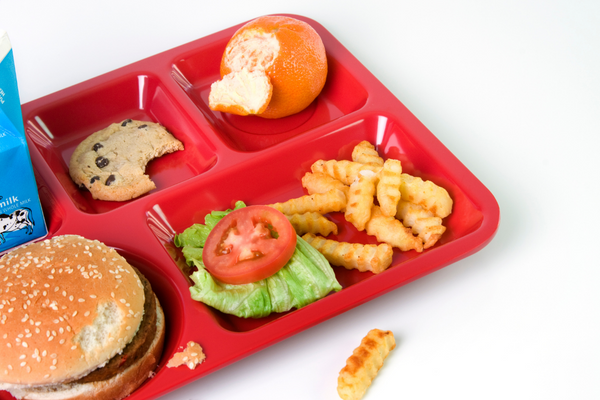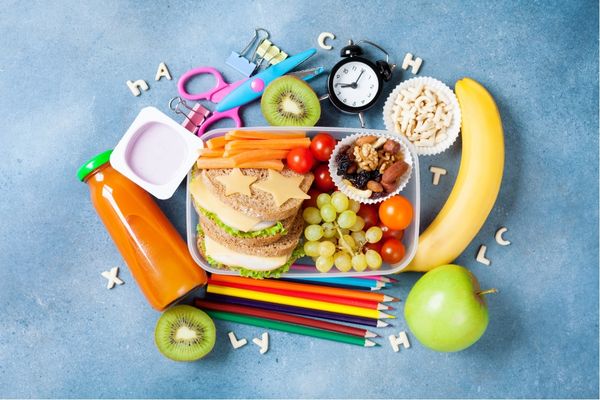
School Nutrition
Guidance, policy updates and actionable resources for schools & districts focused on nutritional standards and access to school meals.
Background
AASA strongly supports the enactment of comprehensive services and programs that encourage children to be healthy.
- Schools will not have to do anything for SY24-25 – everything will remain the same.
- Sodium is far less stringent than the original proposal – there will only be one more reduction.
- Milk and whole grain rules remain the same as now.
- Moving forward states are not required to take fiscal action against districts who are not able to be in compliance due to supply chain disruptions for other issues.
AASA's Position & Priorities
The guiding principles for federal education policy stem from equity and the important role the federal government stands to play in creating equitable learning opportunities for all students. AASA is committed to advocating for better access to school meals and reasonable nutrition standards for students in the public school system.
AASA's priorities are to:
- Support universal school meals on the contingency that such policies do no harm to eligibility for and enrollment in existing federal funding streams serving schools, and fully cover costs associated with the program
- Refrain from increasing the administrative burden related to nutrition eligibility verification
- Ensure that licensing and certification requirements for school nutrition workers are a state responsibility
- Ensure federal school meal reimbursement rates are sufficient to cover the full cost of production
“For years, AASA has been sounding the alarm that when nutrition standards go too far result is meals that students are not willing to consume, undermining the entire purpose of the program – to feed students and ensure they are ready to learn.
David R. Schuler, AASA executive director
Issue Updates
-

March 22, 2023
USDA Releases Proposed Rule to Lower CEP ThresholdOn March 22, the U.S. Department of Agriculture (USDA) released a proposed rule to expand access to the Community Eligibility Provision (CEP) by lowering the minimum identified student percentage (ISP) participation threshold from 40 percent to 25 percent.
-

March 06, 2023
AASA and FRAC Host CEP Kickoff WebinarAASA and FRAC are co-hosting a CEP Kickoff Webinar for schools and districts considering adopting community eligibility for the 2023-2024 school year.
-

March 02, 2023
USDA Released Implementation Guidance for Non-Congregate Meal Service in Rural AreasOn March 1, USDA released implementation guidance for a permanent, non-congregate meal service through the Summer Food Service Program (SFSP) and National School Lunch Program (NSLP) Seamless Summer Option (SSO) for rural areas with no congregate meal service.
-

February 09, 2023
USDA Issues Proposed Updates to Nutrition StandardsOn February 3, USDA issued a new proposal to update the nutrition standards to align with the 2020 Dietary Guidelines.
Get Involved
Get the most up-to-date information and alerts so you can make your voice heard.
Get the AASA Advocacy App
Additional Resources
U.S. Department of Education Resources
- Public school students eligible for free or reduced-price lunch
- Back to School 2022-2023: HOW TO PRIORITIZE THE HEALTH AND SAFETY OF STUDENTS, SCHOOL PERSONNEL, AND FAMILIES
- Free or Reduced-Price Lunch vs. Direct Certification: Understanding School Lunch Eligibility in the Common Core of Data
- Nutrition Standards for School Meals (Source: USDA)
Resources to Support School Nutrition
- Measuring Student Poverty (Source: Urban Alliance)
- Model Estimates of Poverty in Schools (Source: Urban Alliance)
- Toward a Better Measure (Source: Data Quality Campaign)
- Is Free and Reduced-Price Lunch a Valid Measure of Educational Disadvantage? (Source: Domina, Pharris-Ciuriej, and Sanabria. [2018]. Educational Researcher.)
- Food Insufficiency During COVID-19 (Source: Food & Research Action Center [FRAC])

Superintendent Advocacy at Your Fingertips
Educate. Influence. Impact.
Download the AASA Advocacy App today.
